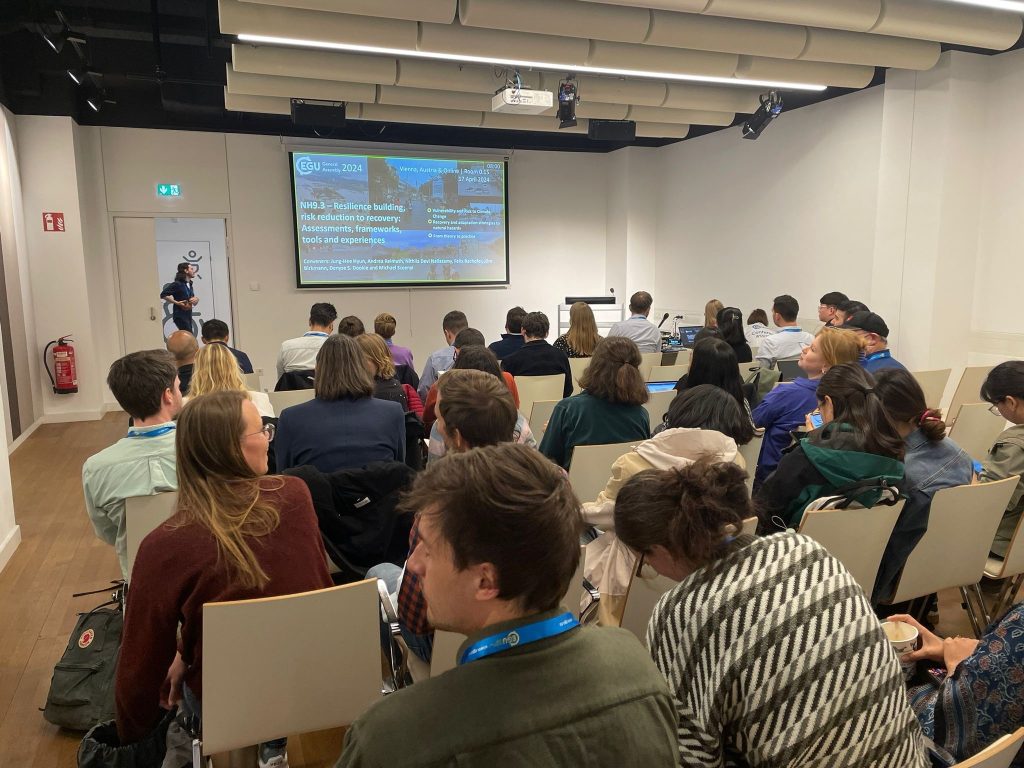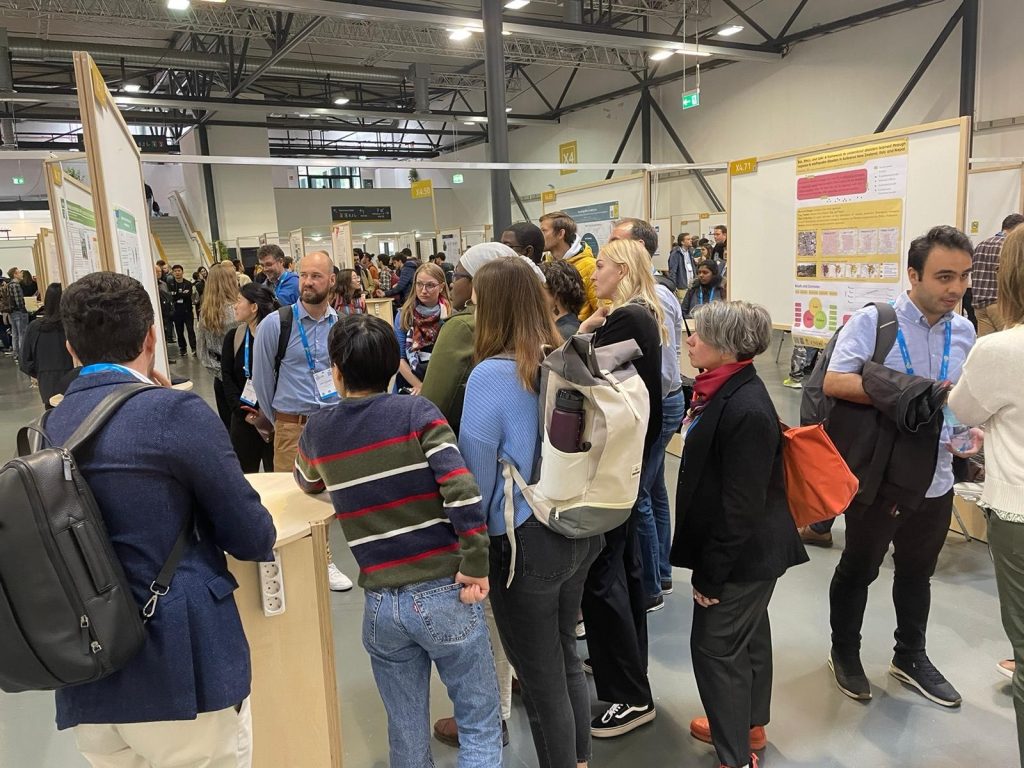Last month the European Geosciences Union (EGU) held its annual General Assembly, with over 18,000 participants from 116 countries attending the in-person event in Vienna, and roughly 2,500 more joining online. Zurich Flood Resilience Alliance colleagues from IIASA, Practical Action and Z Zurich Foundation were in attendance, convening sessions and sharing knowledge on climate resilience.

From climate communication to early warning systems
The first day of EGU 2024 started with societal responses to extreme events at the nexus of social sciences and natural hazards. A big observation when reviewing the entire program was the prominence of the debate around climate and geoscience communication, with many sessions discussing climate narratives, communication of systemic crises, the power of networking for climate change communication and more.
There was a focus on addressing environmental inequity, including aspects of mental health/climate fear, with a focus on urban areas worldwide. Scientists are increasingly more aware of climate policy and the need to communicate effectively with policymakers and the public.
EGU 2024 also provided a great opportunity for discussions on both high-tech and low-tech approaches to early warning systems (EWS), including monitoring and warning, forecasting, and decision-making tools/approaches. Whilst this progress is great to see, it does highlight the gap between the challenges and solutions in developed countries, and the challenges and solutions appropriate for developing countries.
Through our work on EWS, the Alliance will continue to harness cutting-edge technology, but with a focus on appropriate technology for the contexts in which we work. That includes seeking out in-country innovations, so that we can address some of the gaps in EWS in the Global South.
Assessments and frameworks of risk reduction and resilience
On the third day of EGU 2024, Alliance colleagues from IIASA and Z Zurich Foundation were convening a session on resilience building, from risk reduction to recovery. It was great to see such a big attendance at our poster train in the session, along with interesting presentations from the governance climate change adaptation-community nexus!

Alliance colleagues from IIASA explored the multiple and triple-resilience dividends of resilience. The multiple resilience dividend approach interprets resilience as the system’s capacity to achieve development goals whilst managing climate risks proactively. It moves away from the typical “bouncing back” understanding and adopts a “bouncing forward” perspective, offering a holistic view of climate change adaptation benefits beyond disaster risk management. The “resilience dividend” is a key concept in the literature, referring to the net benefits of investing in resilience, even in the absence of a climate-related disaster.
This presentation introduced a framework for incorporating the multiple resilience dividend approach into decision-making, aiming to enhance the impact of adaptation decisions and support the case for resilience investment. Developed in three stages, the framework is built upon:
(i) findings from the literature related to resilience dividends, co-benefits assessment, and adaptation decision-making
(ii) systems thinking
(iii) multi-disciplinary expert feedback.
The session was rounded off with new modeling approaches to risk assessment and resilience, with a focus on flooding.
A further observation seen at the event was the interest shown in multi-hazard risk assessments and tools. When Mirianna first attended EGU twelve years ago, there was only one session on multi-hazards – and out of the six presenters, only one talked about the interactions between hazards. This year, the multi-hazard session – which took place over two half-days – was packed. This wealth of research and evidence will be useful to build on when considering implications for multi-hazard EWS.
We must be critical when it comes to data
Unsurprisingly given the scientific community present at EGU 2024, data is key to many discussions about resilience: particularly how we get more of it, how to make it more reliable, and how to better use it. However, we must be critical of the data and quality; for example, more fires today might simply be explained by an increase in sensor sensitivity picking up more data than had been previously.
We must keep a critical eye and be able to calibrate data and model results with the real situation on the ground, be it through citizen science, fieldwork, listening to local and indigenous knowledge, and so on.
This felt like the most intense EGU event yet, and it’s great to learn from so many great researchers in the field; especially as our work in the Alliance is expanding in many directions for which EGU provides scientific input and platforms for discussion, such as heat, wildfires, hazards in urban contexts, and more.
For more information on the participation of the Zurich Flood Resilience Alliance, visit our EGU24 event page.

Hayley says:
I couldn’t resist commenting. Exceptionally well written!
Georgia Landray says:
Thank you for your feedback!